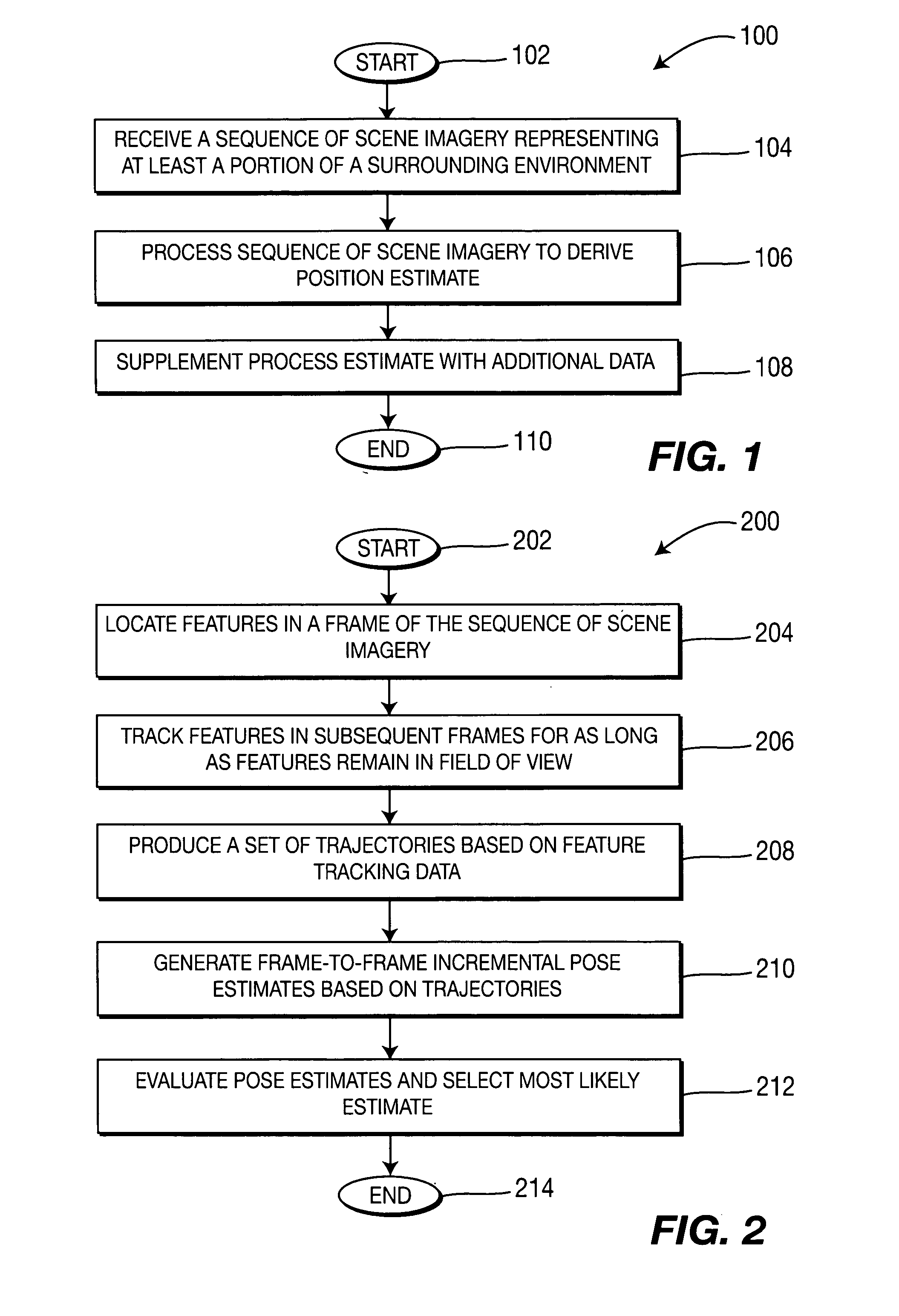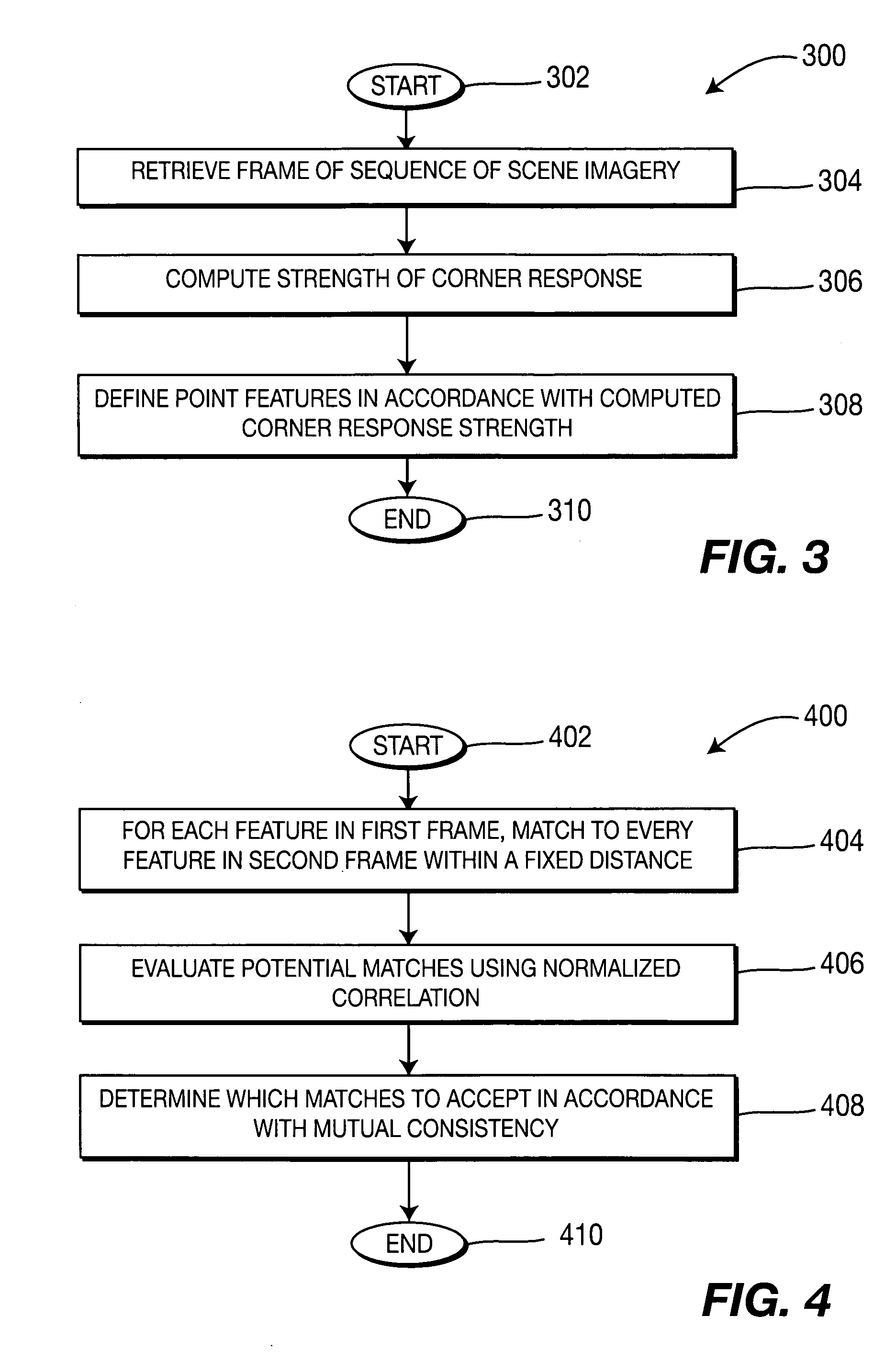Method and apparatus for visual odometry
a visual odometer and visual odometer technology, applied in the direction of navigation instruments, instruments, cycle equipment, etc., can solve the problems of poor indoor performance, lack of versatility of most existing systems for autonomous navigation, and poor performance of gps-based navigation systems
- Summary
- Abstract
- Description
- Claims
- Application Information
AI Technical Summary
Problems solved by technology
Method used
Image
Examples
Embodiment Construction
[0016] The present invention discloses a method and apparatus for visual odometry (e.g., for autonomous navigation of moving objects such as autonomous vehicles or robots). Unlike conventional autonomous navigation systems, in one embodiment, the present invention relies primarily video data to derive estimates of object position and movement. Thus, autonomous navigation in accordance with the present invention is substantially environment-independent. Environment-specific sensors, such as those conventionally used in autonomous navigation systems, serve mainly as optional means for obtaining data to supplement a video-based estimate.
[0017]FIG. 1 is a flow diagram illustrating one embodiment of a method 100 for visual odometry, according to the present invention. The method 100 may be implemented in, for example, an object requiring navigation such as an autonomous (e.g., unmanned) vehicle or in a robot. The method 100 is initialized at step 102 and proceeds to step 104, where the ...
PUM
 Login to View More
Login to View More Abstract
Description
Claims
Application Information
 Login to View More
Login to View More - R&D
- Intellectual Property
- Life Sciences
- Materials
- Tech Scout
- Unparalleled Data Quality
- Higher Quality Content
- 60% Fewer Hallucinations
Browse by: Latest US Patents, China's latest patents, Technical Efficacy Thesaurus, Application Domain, Technology Topic, Popular Technical Reports.
© 2025 PatSnap. All rights reserved.Legal|Privacy policy|Modern Slavery Act Transparency Statement|Sitemap|About US| Contact US: help@patsnap.com



